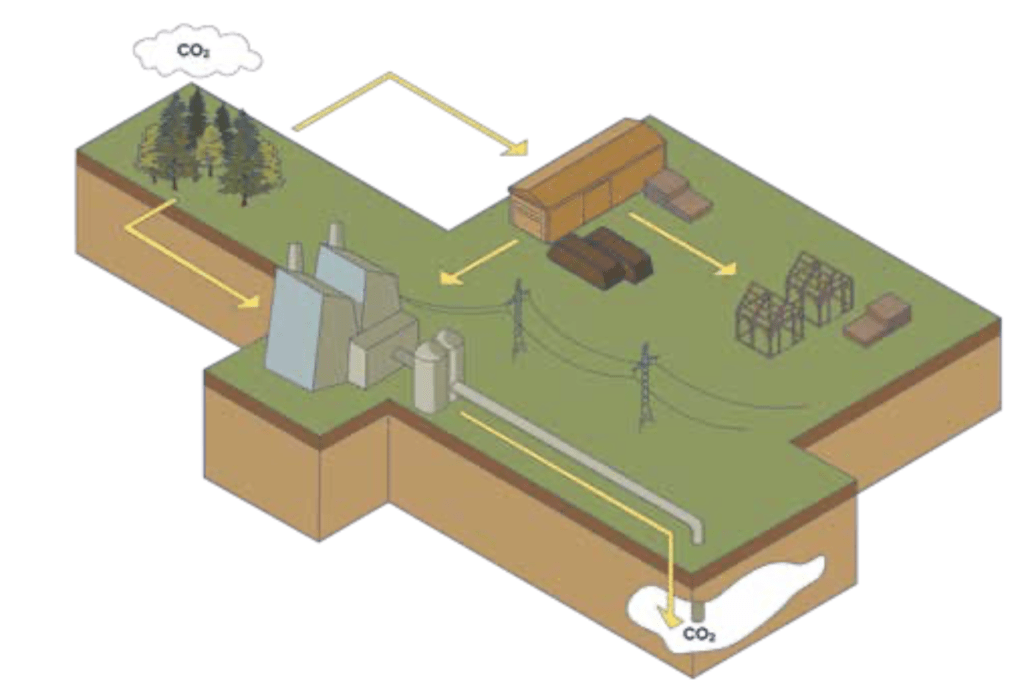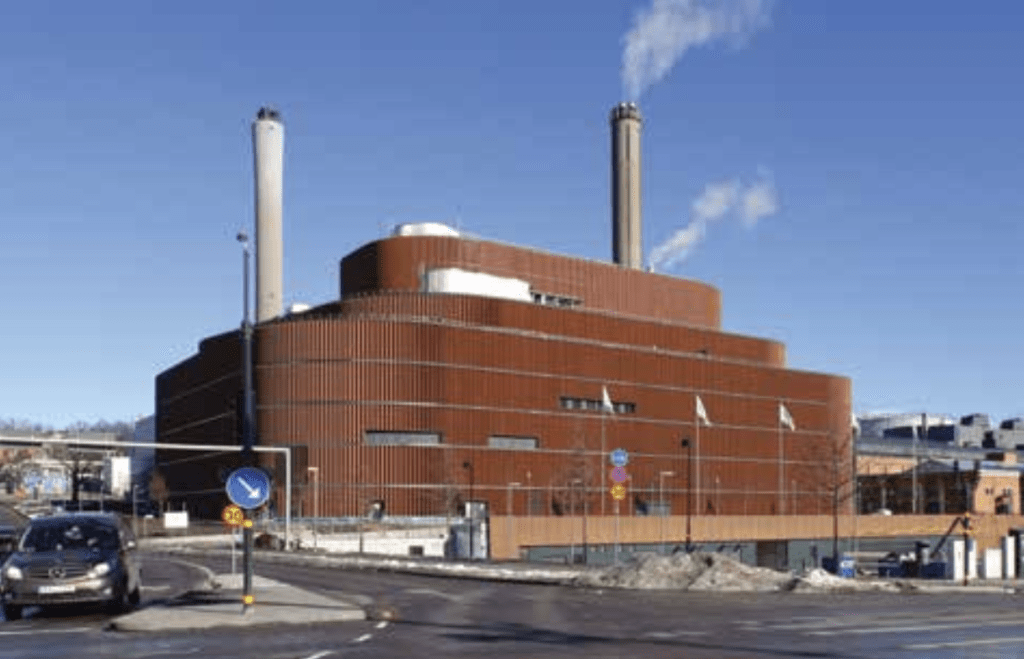Going Negative: How Canada Can Help Decarbonize the World
 Managing and using forests for decarbonization is Canada’s most valuable tool, writes Jamie Stephen
Managing and using forests for decarbonization is Canada’s most valuable tool, writes Jamie Stephen
By Dr. Jamie Stephen
September 16, 2024
What is the primary problem with Canada’s climate policy? It is not designed for Canada. It does not reflect our northern, resource-dependent economy. Nor does it reflect the geographic realities or regional differences of Canada. In general, a moral argument, instead of an economic one, has been used for climate policy. This, along with spurious claims that buying an EV or heat pumps will stop wildfires or floods, has led to public disillusionment on climate action. It doesn’t need to be this way. Canada can be a world leader in decarbonization – not only of our own economy, but those of other nations as well. But it requires a complete shift in climate policy approach and mindset to one that values economic efficiency, carbon efficiency, and exports.
First, let’s be clear about what Canada, a trade dependent nation, supplies to the world. On a net basis, Canada’s largest exports are oil, agricultural products, forest products, fossil gas, metal and mineral products, metal ores, and coal. These categories represent 97% of our net exports and are what the world looks to Canada to supply. We have a competitive advantage. In comparison, we are a major net importer of consumer goods, industrial machinery, automobiles (a negative trade balance of C$40 B in 2023), electrical equipment, industrial products, and services. While there are certain subsectors where we excel, it is hard to see how Canada has a competitive advantage in any of these sectors broadly since they rely upon very large, low-cost workforces to be globally competitive. Canada has neither a large nor a low-cost workforce.
There is no scenario in which decreasing energy exports doesn’t lead to a significant decline in the standard of living for Canadians. An energy transition consisting of widespread electrification using imported solar panels, wind turbines, heat pumps, and EVs, as currently envisioned by many policymakers, will simply not happen. It is too economically destructive to be supported by the population over an extended period of time, which means any government will lose power (pun intended) before this all-electricity utopia can become a reality. The idea that domestic consumption of renewable electricity will somehow replace oil, forest products, or fossil gas exports is disingenuous at best.
What are trees?
Does this mean Canada must always be a laggard in climate action or that we must sacrifice economic growth for the sake of the climate? Absolutely not. Some will argue continued use and export of fossil fuels is simply not consistent with climate goals. That is true if you only consider one side of the carbon equation. Getting to zero absolute emissions would require eliminating all fossil fuels. But we don’t call it absolute zero. We call it Net Zero. Economic efficiency and carbon efficiency require us to look at the other side of the carbon equation: negative emissions. These negative emissions are a permanent removal of carbon from the atmosphere, with the carbon stored 2-3 km below the surface of the earth. While much attention in North America has been paid to the use of Direct Air Capture (DAC) – giant fans – to remove carbon from the atmosphere, we in Canada have an abundance of a much more advanced technology: trees.
What are trees? It may seem a ridiculous question but fundamentally, they are CO2 removed from the atmosphere, water pulled from the ground, and solar energy captured from the sun. Combustion of wood releases that solar energy, the water, and the CO2. Obviously, trees are much more to us than these three components, but from a chemical and energetic perspective, trees are stored carbon, water, and solar energy.

BioEnergy with Carbon Capture and Storage (BECCS) combines the CO2 removing power of trees with technology/TorchLight graphic
So how do trees allow us to meet climate goals while growing our resource-dependent economy and meeting the energy needs of our international customers such as Japan, Korea, Germany, and the UK? By coupling the power of healthy, growing trees to remove CO2 from the atmosphere with a technology combination known as BECCS: BioEnergy with Carbon Capture and Storage. The BioEnergy component is the use of wood to meet domestic heat and power needs for buildings – via district heating – and industry. Then, there is the carbon capture and storage part of BECCS. Since the CO2 in wood originated in the atmosphere, capturing and permanently storing it following bioenergy generation results in a net carbon dioxide removal (CDR) from the atmosphere.
Canada shares its atmosphere with all other countries, which means the emissions that are removed using BECCS in Canada could have originated anywhere in the world – including from the natural resources we export. In addition to supplying negative carbon heat to district heating networks in cities, we can use negative emissions energy from BECCS to recover and process natural resources to make them zero or even negative carbon intensity, removing the emissions before they occur.
Going Negative
This is how Canada can outcompete in a world that values carbon – by producing and exporting crude, fossil gas, and refined products that are the lowest carbon in the world. The Middle East has lower crude production costs and upstream GHG emissions than traditional oil sands operations, but it lacks the forest resources to go negative. It also means that Canada can hedge the world’s appetite for low-carbon but higher cost products by continuing to develop natural resources, knowing that if customers are truly willing to value carbon, we can supply low or even zero-carbon finished fossil fuels.
Why not just use those giant DAC fans to remove the CO2 from the atmosphere and leave our forests alone? Three reasons. First, DAC is a massive consumer of energy. BECCS is called BioEnergy with CCS for a reason – it generates energy andCDRs. Second, cost. Under no circumstances will it be lower cost to pull CO2 out of the atmosphere with fans than growing a tree. And thirdly, the baseline. The baseline in Canada without BECCS is massive wildfires, air pollution, and carbon losses from our forests. DAC has no such imperative for action. In other words, BECCS generates valuable energy while realizing four decarbonizations at once: heat, electricity, CDRs, and avoided carbon losses from Canada’s forests.
Alternatively, why not stop using fossil fuels and embrace ‘clean fuels’, the Government of Canada’s shorthand for non-fossil fuels such as liquid biofuels? Carbon and cost efficiency. A tonne of wood used in a heat-and-power BECCS plant in Alberta reduces GHG emissions by six times compared to conversion of that same tonne of wood into renewable diesel or ‘sustainable aviation fuel’ (SAF). BECCS is also a fraction of the cost per tonne of CO2 and the technology is much lower risk. We live in the economic reality that there is a limit, in dollars per tonne of CO2, that consumers or companies can bear. In many cases, such as aviation, it is simply much more carbon- and economically efficient to continue use of fossil fuels but to remove the emission via BECCS. We must be pragmatic about achieving our goals.
 The wood chip-fuelled KVV8 combined heat and power plant in Stockholm/Holger Ellgaard
The wood chip-fuelled KVV8 combined heat and power plant in Stockholm/Holger Ellgaard
Global Market Share
If you are under the mistaken belief that leaving Canada’s forests alone will have a positive climate impact, have another look at the numbers. Forests are by far the country’s largest source of emissions of both greenhouse gases and air pollution. Several times more than everything else combined. When forest emissions are included, Canada’s GHG emissions in 2023 were more than those of the entire EU. On a per capita basis, 100 times that of Sweden, another northern, boreal country. Forest carbon offset projects, which seek to ‘protect’ forests and store carbon, massively constrain the contribution of forests to climate mitigation. There is a limited amount of carbon that can be stored on a hectare of land. In comparison, BECCS allows us to manage forests to be healthy, productive, and continuously remove CO2 from the atmosphere. Managing and using forests for forest products and BECCS is Canada’s most valuable tool for decarbonization. Besides, as our wildfires show, offset ‘forest protection’ projects are temporary and, frankly, don’t work in forests with high disturbance risk. Canada’s National Parks, the epitome of protection, are a net source of GHG emissions. And as the damage from the Jasper fire showed, GHG emissions can be the least of our worries when wildfires rip through overaged, high-mortality forests.
The scale of the BECCS opportunity in Canada is beyond that of any other sector – in both carbon and economic terms. If Canada managed its forests like Sweden, which harvests seven times the volume per forested hectare as Canada and is, counterintuitively, increasing forest carbon stocks, Canada would generate an additional billion tonnes of wood per year. If we used that wood for decarbonizing industry and buildings while storing the captured CO2 underground, GHG emissions could be reduced by approximately 1.4 billion tonnes per year. This is more than double Canada’s total GHG emissions, meaning we could export CDRs of sufficient volume to eliminate all of the EU’s transportation emissions or almost all national emissions of Japan. By far Canada’s largest net-export product is crude oil, which totaled $124 B in 2023. A billion tonnes of CDR exports at $170/t CO2. Well, the math is simple. The Intergovernmental Panel on Climate Change (IPCC)models that we need 5-10 billion tonnes of BECCS CDRs by 2050 to meet Paris Agreement goals. Why can’t Canada have a 10-20% global market share?
Leadership starts at home. Canada’s existing forest products industry already generates over 40 million tonnes of biogenic CO2 stack emissions per year. Capturing the CO2 from just four existing pulp mills in Alberta would eliminate all domestic aviation emissions in Canada. That is something Canadians can understand and get behind. And something that would show Canada is serious about its international commitments and customers. Oil and gas cap? Canada’s wildfires of 2023 produced 75% more GHG emissions than the oil sands – for its entire history since 1967. Government policy has clearly lost the narrative that climate is a numbers game, and we are losing. No matter what your political stripe or rhetoric, it is impossible to argue that we are doing a good job on climate action or carbon emissions. Right now, we are not climate leaders. We need a new approach.
Jamie Stephen is Managing Director at TorchLight Bioresources.
